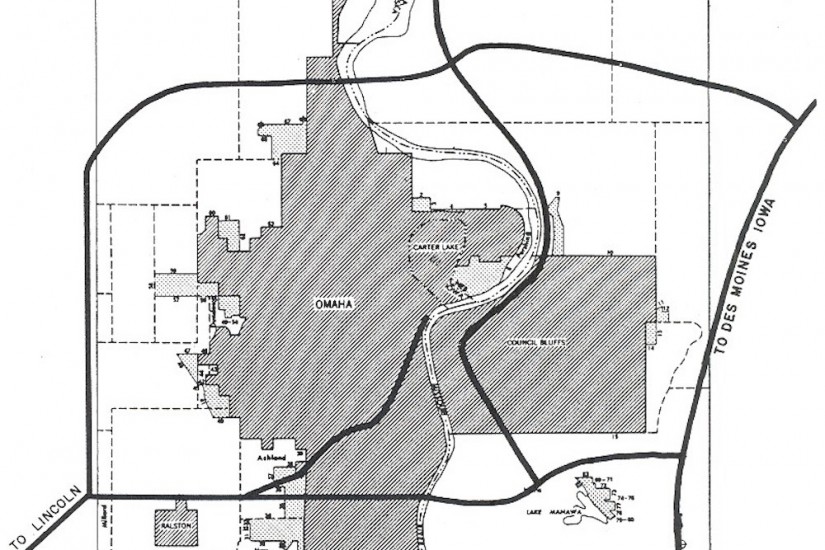Tom Dennison was Omaha’s political boss, largely responsible for getting people elected onto city council for more than 30 years. He also controlled the mayor, who for much of his reign over Omaha was “Cowboy” Jim Dahlman. Dennison, called the Old Grey Wolf, controlled the so-called Sporting District, where the sports were gambling, drinking and prostitution. He was the master criminal and crime boss of the city, too.
As early as 1890, he might have caused Omaha’s first recorded lynching of a Black man. He may have orchestrated the white riots that threatened the Near North Side in 1909. There’s no end to what he might have done.
What we know for sure is that in 1918, Dennison’s mayoral candidate, Dahlman, lost to a reformer named Edward Smith. A year later, Dennison orchestrated a race riot of 20,000 people which culminated in the lynching of an African American, the near lynching of Smith, and the almost total destruction of the new county court, finished only two years earlier. Two people were charged for this act of wanton violence, and neither of them was Dennison. However, two years later Dahlman was re-elected as mayor.
The mob had turned to the Near North Side neighborhood in order to bring their hatred of Blacks to bear on the commercial, social and cultural success there. However, they were met by heavy machine guns and troops from North Omaha’s Fort Omaha, and failed to cause any significant physical damage. However, this was the beginning of official segregation in Omaha’s housing: the Army commanding blacks to stay within a specific area where they could protect them, and that area become red lined. According to one researcher,
“This protective isolation was enacted only for temporary safety reasons; however, it quickly became a type of martial law where African Americans were restricted to the Near North Side neighborhood.”
This hatred continue to strike at the Near North Side. For instance, in 1926 the home of Malcolm Little, a child growing up on Pinkney Street, was burnt to the ground by the KKK. Young Malcolm’s father was a Black advocate, and upset the white power structure in the city. The child grew up to become a leader of the Civil Rights Movement in the United States called Malcolm X.
Drawing Lines
After the riots of 1919, the Near North Side were made completely segregated.
Red lining prohibited Blacks from living south of Cuming Street or north of Locust, so they made the most of their neighborhood. (Special thanks to Professor Palma Strand at Creighton University for sharing the HOLC map at the top of this article!) However, the tactics for getting whites out of those neighborhoods and keeping African Americans from other neighborhoods weren’t so clear.
Using racism to scare white Omahans, real estate agents and politicians agreed on an informal system of segregation called red lining. Deciding where Blacks could live and where they could not live, they went office to office among the city’s real estate industry and drew red lines on maps of the city. Within those boundaries, houses and businesses could be owned and rented to Blacks. Outside, they could not.
Other city services followed suit. The schools within the red lined area became exclusively Black schools, while the streetcars that went through picked up fewer passengers than other neighborhoods. All of this began around 1890, with the full brunt of red lining evident by the 1920s.
